Michigan invented shopping malls. Photos show rise, fall, rebirth since 1954
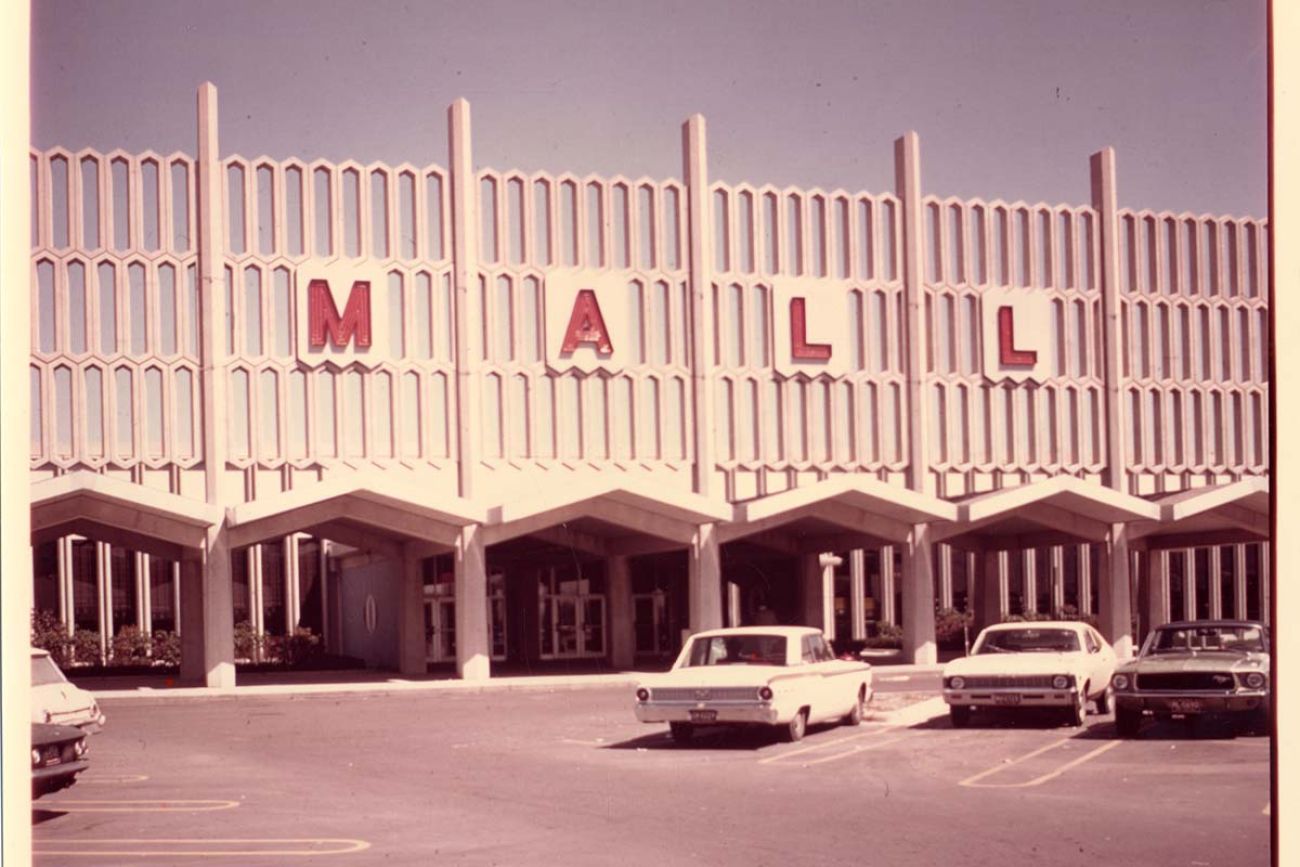
- Michigan’s malls grew from the nation’s first, Northland in Southfield, to more than three dozen
- Indoor malls once were social and shopping go-tos, driving retail profits for decades until they faded in the 2000s
- Today, many malls are popular again, with high-end stores, young adults and diverse tenants driving the turnaround
Any enclosed mall remaining in Michigan today is likely in some stage of rebirth.
Experts say for more malls will close in the coming years, as retail patterns evolve: Online shopping, omnichannel delivery and in-person experiences for consumers are all pieces of the new business model for retailers, and, in turn, malls.
But projections note that traffic at malls is stable or increasing among younger consumers. The most successful malls are the ones with higher-end stores and locations that pull in more affluent customers, such as the venerable Somerset Collection in Troy.
Related:
- Lakeside isn’t dead. It’s awaiting a $1B rebirth. Can Michigan malls follow?
- A Sears comes down, apartments go up at Michigan mall. Is this the future?
- Bed Bath & Beyond’s decline breeds opportunity for Michigan retail centers
- A Michigan mall’s transformation: From Macy’s to self-storage
But many mall owners are taking steps, too, to utilize their assets: Location, size and abundant parking (which can yield space for new stores, restaurants, even housing) all fit into the mix.
And among the malls that slid into financial peril, new buyers find opportunity, like at Midland Mall or Fashion Square in Saginaw.
Here’s a visual spin through mall changes in Michigan:
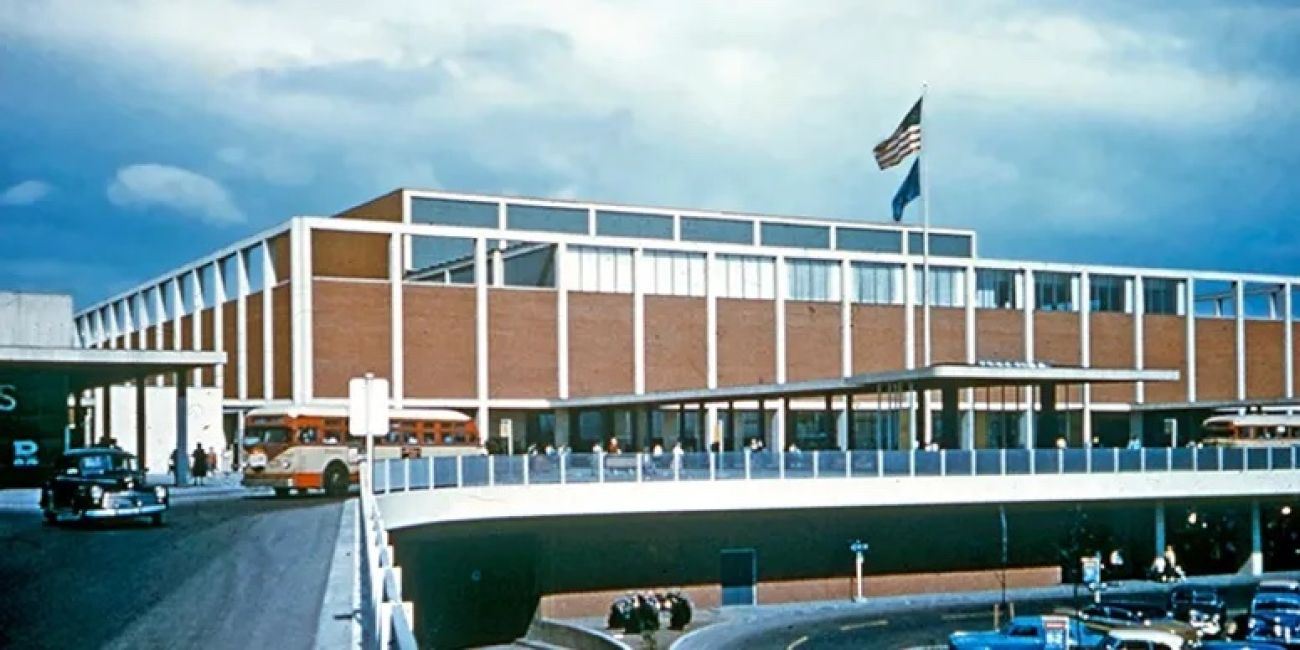
Northland is the mall that started it all.
JL Hudson, long a leading department store in downtown Detroit, committed to anchoring a suburban shopping center, credited as the first and largest regional mall in the nation. The move shifted retail from cities to the suburbs, creating destinations solely for shopping and light recreation. Northland opened in 1954, and its success turned into a model for retailers.
(Courtesy of “Northland Mall” by Gerald E. Naftaly; and Gruen Associates)

Here’s another shot of the mall from just after it opened. (Detroit Historical Society).
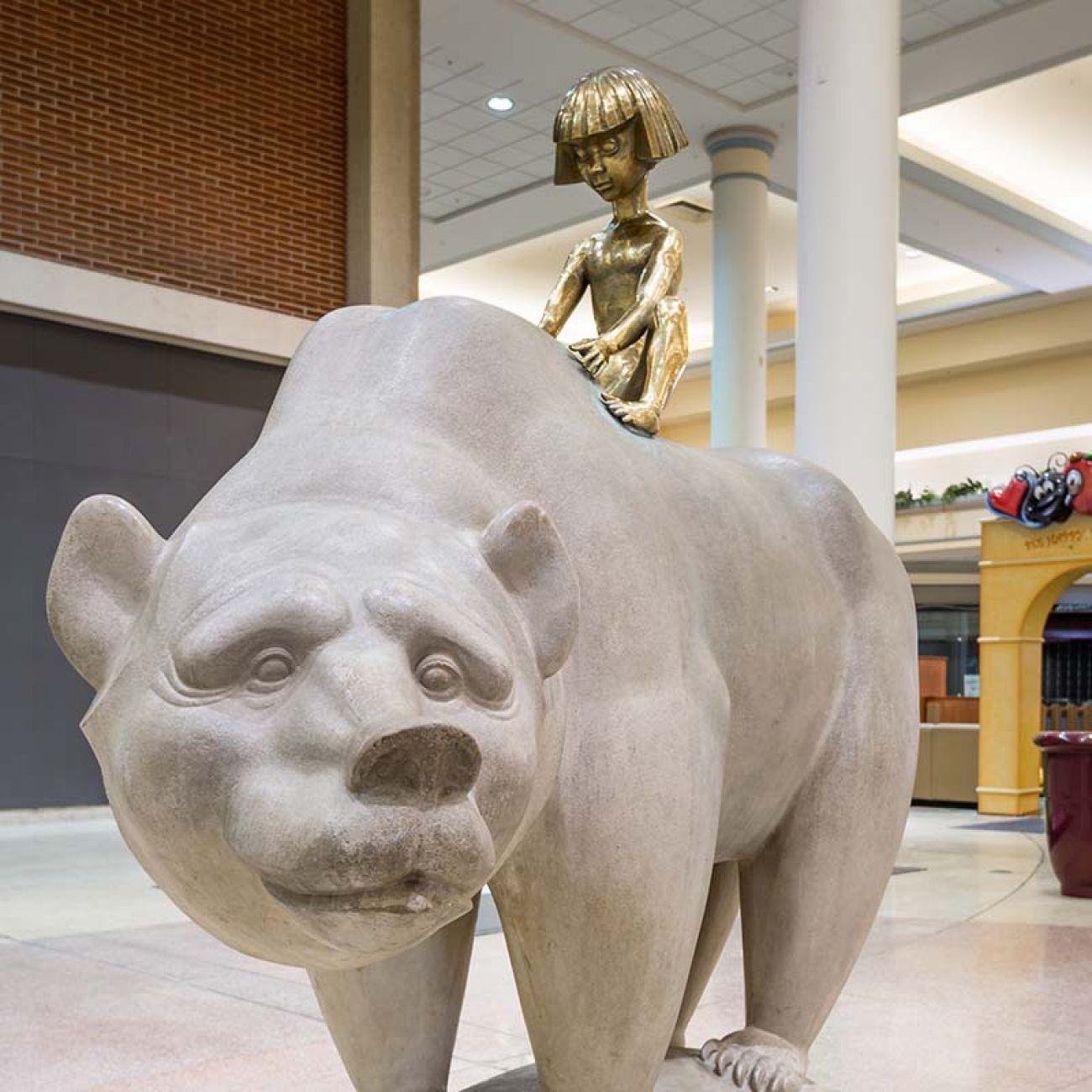
Northland used seating areas, plants and sculptures to create its sense of place. Among them was the "Bear and Boy" sculpture by Marshall M. Fredericks. The sculpture is now at the Southfield Public Library. (Steve Lagreca / Shutterstock.com)
Oakland Mall sign being hoisted into place, 1968. Troy, Michigan in Oakland County. @MichiganHist Image source: Royal Oak Daily Tribune. @DailyTrib pic.twitter.com/DQd3HmrwMw
— Oakland History Center (@OaklandHistory) October 15, 2021
Regional malls proliferated in the decade after Northland, with metro Detroit’s “directional” malls of Westland, Eastland and Southland. Oakland was in the early batch, too, but there was already a Northland — so its sense of place was then-fast growing Oakland County.
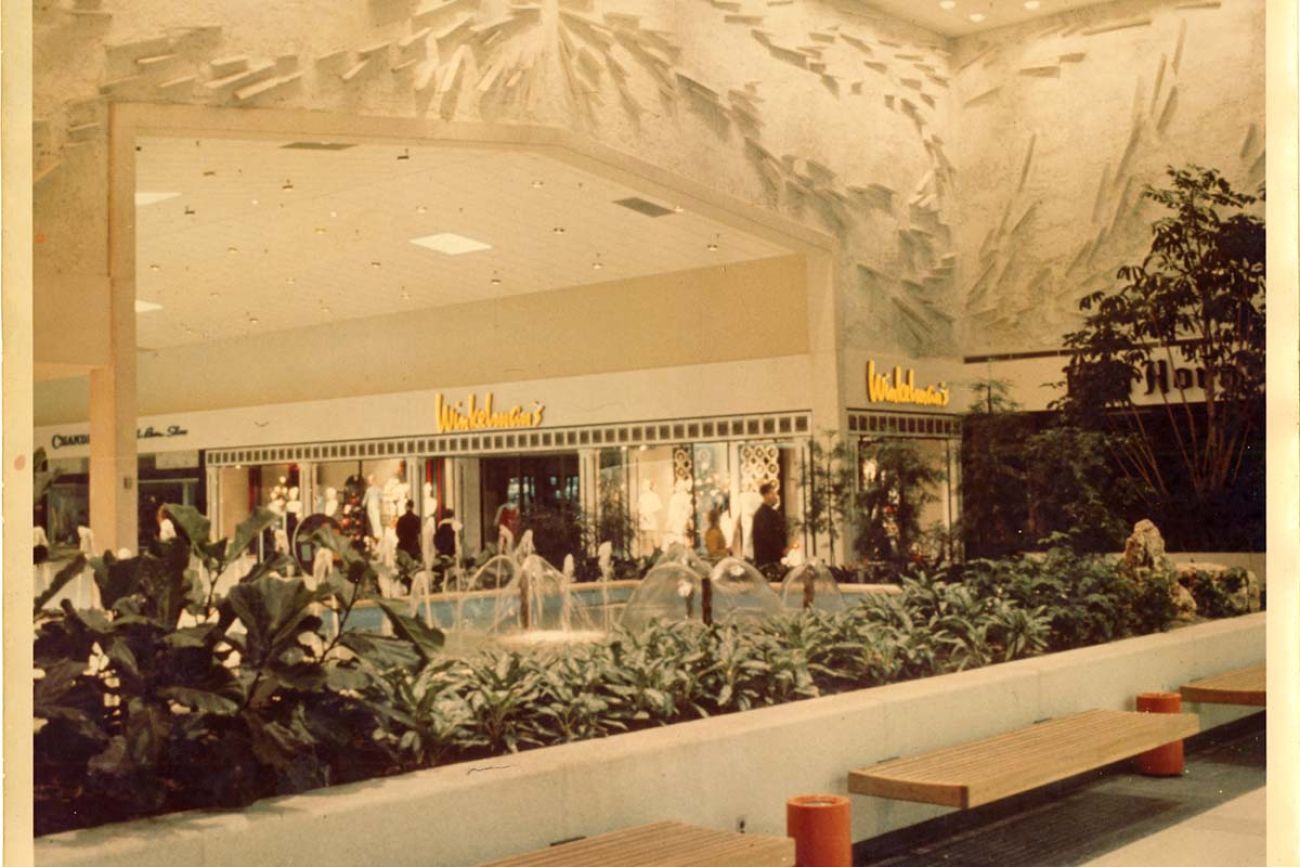
This shows the west interior of Oakland Mall, with a fountain and benches. The Winkelman's store in the background was a Detroit-based fashion chain that grew into the suburbs along with malls. The chain eventually had 86 stores in three states. (Photo courtesy of Detroit Public Library)
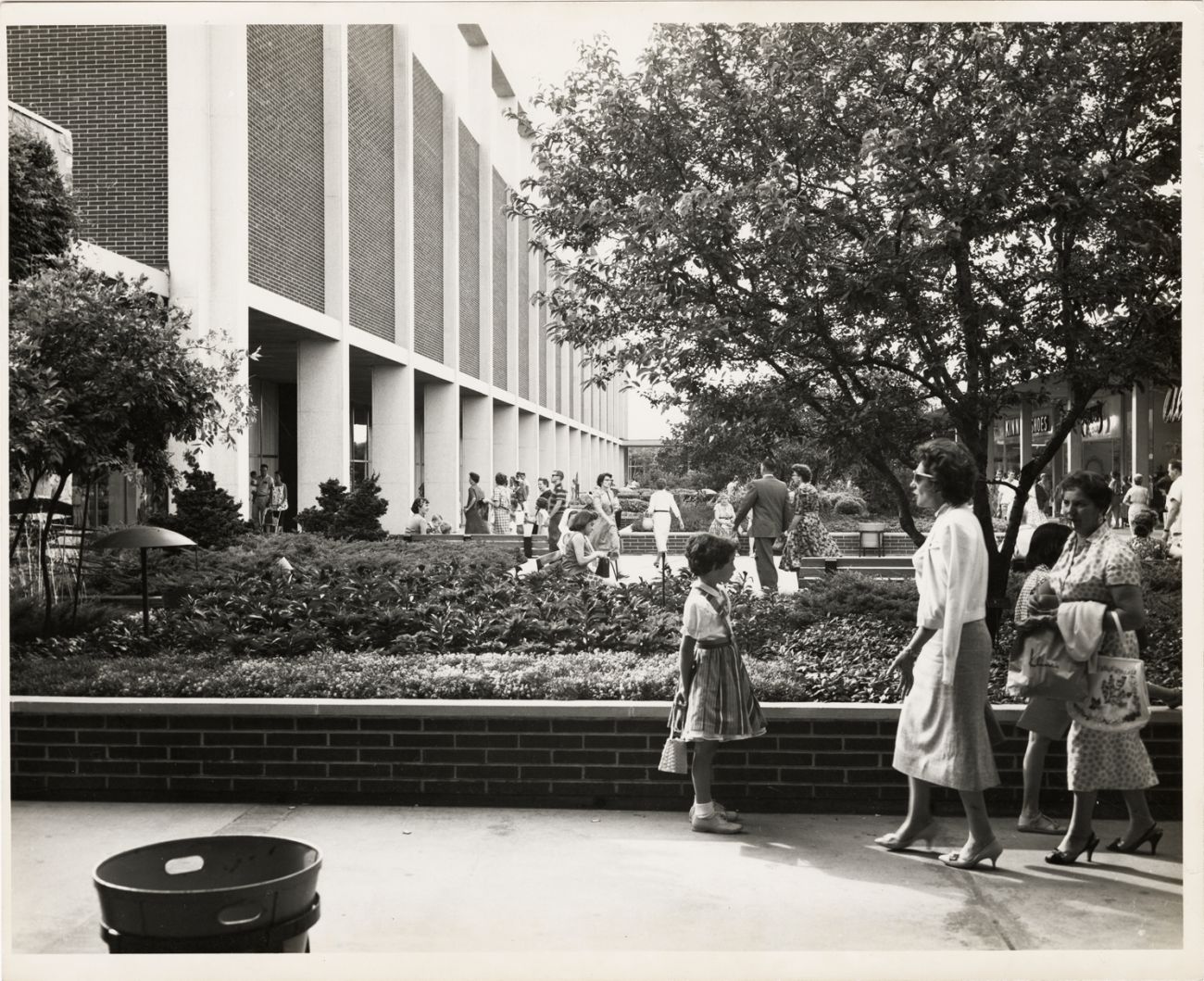
The distinctive looks of Northland and its Hudson’s store were the basis for malls across metro Detroit. Here, shoppers can be seen heading to Eastland Mall in Harper Woods. The mall’s decline was steep after Lakeside was built in Sterling Heights and fresh strip shopping centers attracted the newer and more popular retailers. The building was demolished, and the property is now a $94 million industrial center. (Photo courtesy of Detroit Public Library)
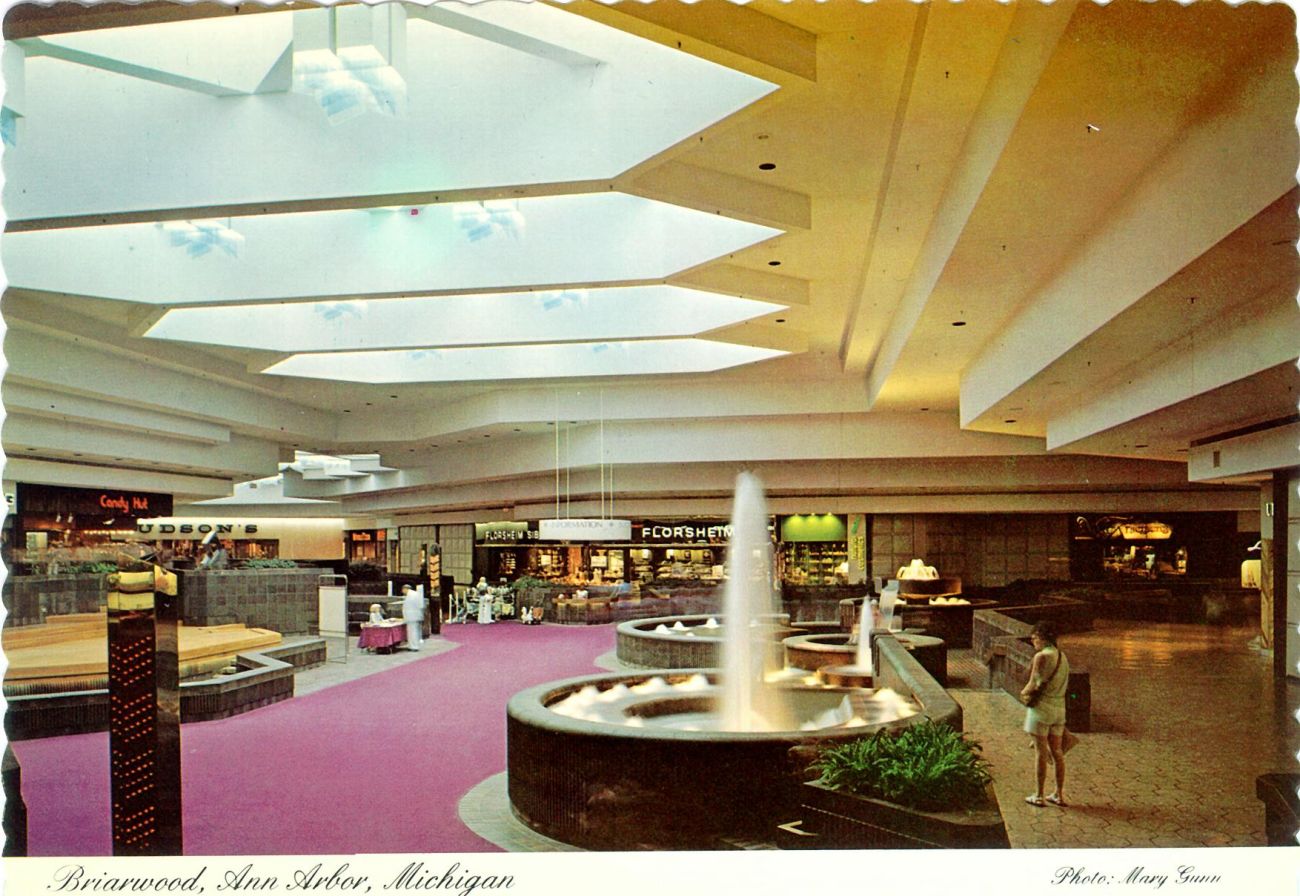
Briarwood Mall in Ann Arbor opened in 1973 as the Taubman Companies expanded their Michigan retail presence. The mall, about 1 million square feet, included modern seating areas, skylights and angular corridor design, all an early peek of sorts into the even newer malls in development by Taubman. (Photo courtesy of University of Michigan’s Bentley Historical Library)
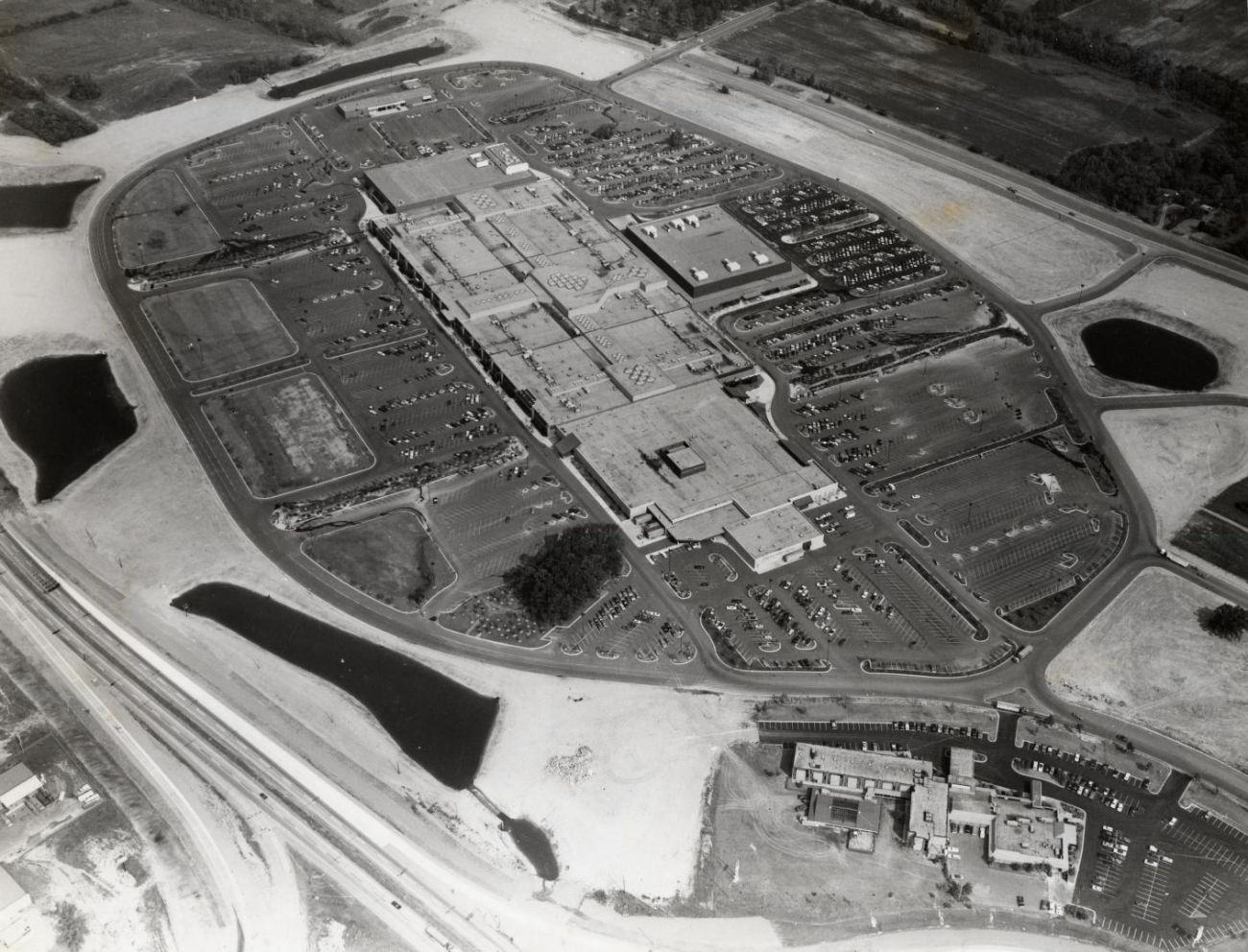
This aerial photo of Briarwood from 1974 shows the mall itself and the surrounding property. Malls were financially possible in part because the anchor department stores owned their property and paid for the building construction. The mall layout, seen here, also allowed for development of multiple out lots to boost profitability for the developer. Banks, offices and restaurants are among the buildings now at this mall site at I-94 and South State in Ann Arbor. The mall is now being redeveloped as Sears is demolished, adding space for new stores and housing. That effort is among the first in a new plan by Simon Properties, the largest mall owner in the U.S. (Photo courtesy of University of Michigan’s Bentley Historical Library)
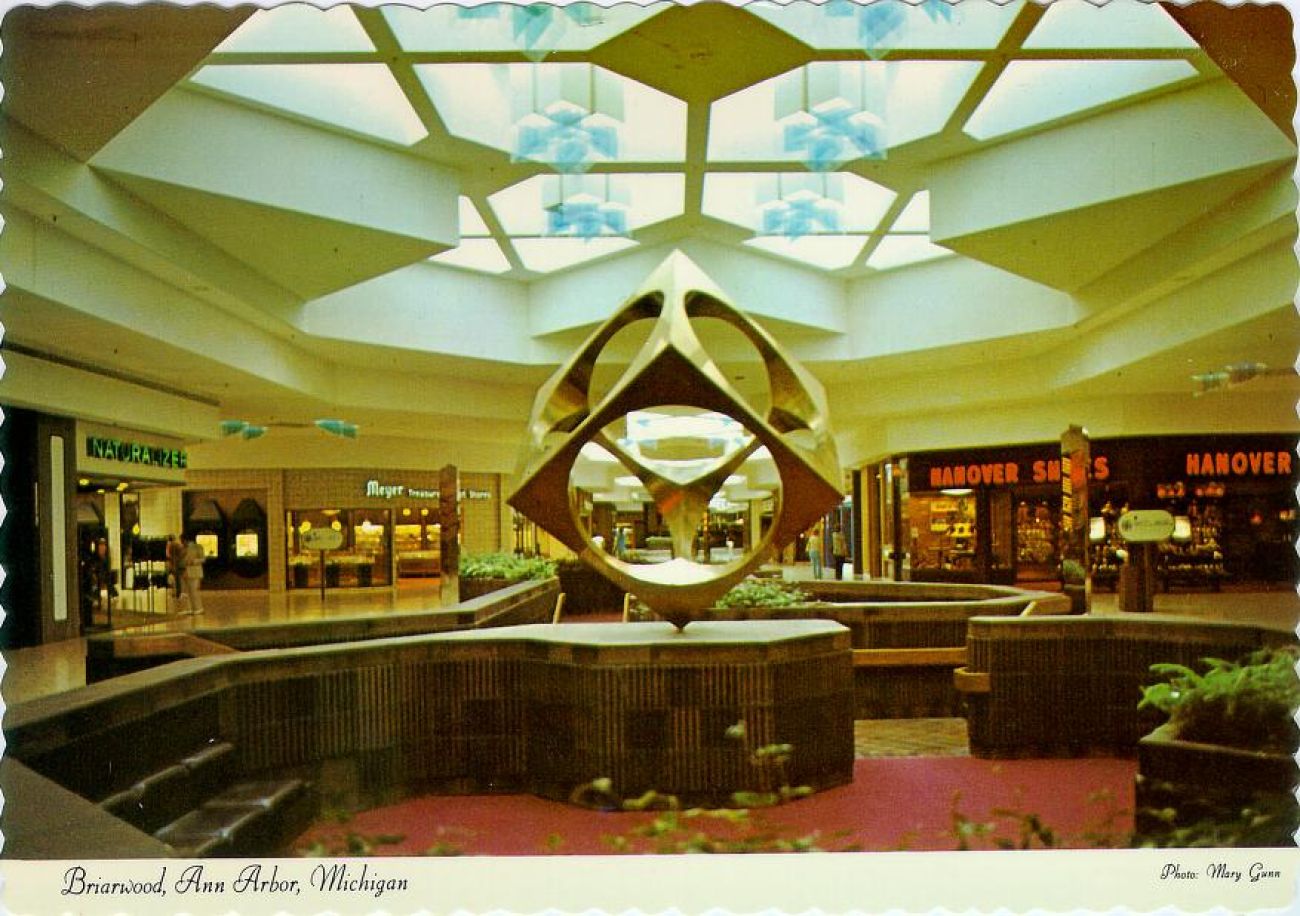
Another view of Briarwood and the new bar it set regionally for mall style. Downtown Ann Arbor worried about losing stores to the mall. Eventually, some retailers did find opportunities at Briarwood, including women’s apparel store Marti Walker and Jacobson’s. (Photo courtesy of University of Michigan’s Bentley Historical Library)
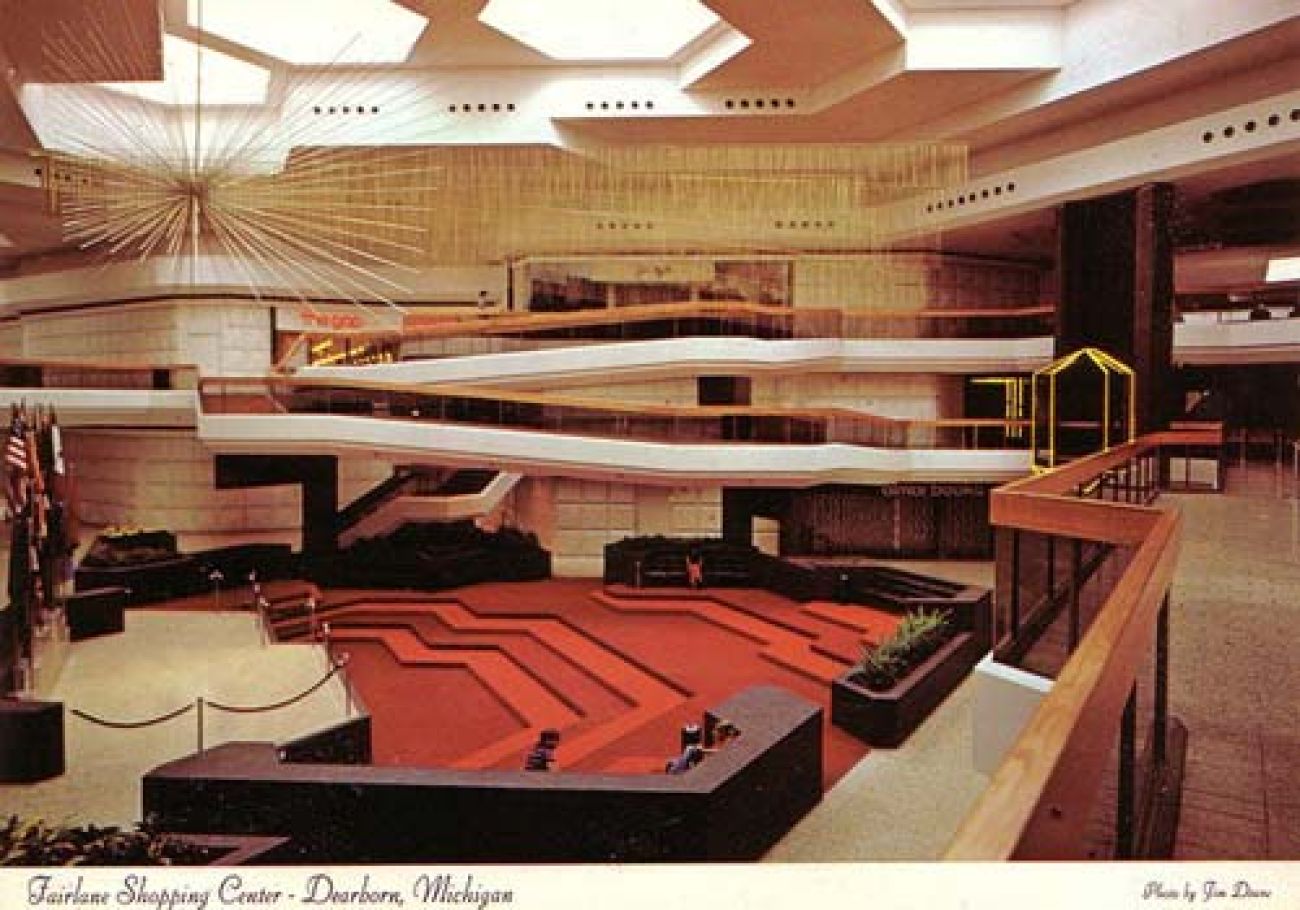
Fairlane Town Center in Dearborn opened in 1976, presenting shoppers with over 1 million square feet of shopping, dining and activities (an ice rink was an early stab at diversifying the tenant mix). The new mall style from Taubman depicted in this postcard — bigger and bolder than at Briarwood — excited shoppers, who made their way among three open levels and rode a glass elevator between them.
Circa 1976 postcard of Lakeside Mall in Sterling Heights I recently acquired.#SterlingHeights pic.twitter.com/4eXRn8luX6
— Michigan's Past (@MichiganHist) July 12, 2021
Lakeside in Sterling Heights was a sister mall to Fairlane, built in a similar eye-popping mid-1970s style. Rather than being built in an inner-ring suburb, Lakeside was located in central Macomb County, on M-59 or 20 Mile Road, helping propel growth in the area. The mall will close this year, its owners say, as they pursue a $1 billion redevelopment.
Woodland Mall, Grand Rapids - prob ca. 1968-75 (http://t.co/csRqDlN3Xt)#GrandRapids pic.twitter.com/UzVlVwz4rB
— Michigan's Past (@MichiganHist) May 22, 2014
On the west side of the state, Woodland Mall south of Grand Rapids became a regional destination for decades. The mall is actively reinventing itself, with a recent addition coming from construction of a new Von Maur anchor store.
Lakeview Square Mall, Battle Creek - ca. 1983 (Willard Library)#BattleCreekhttps://t.co/XkhGWiTT20 pic.twitter.com/h6JsT7XEgK
— Michigan's Past (@MichiganHist) December 23, 2017
The Lakeview Square Mall in Battle Creek has had some troubles. This mall, next to I-94 with high traffic visibility from the highway, suffered through the Great Recession decline. Macy’s , Sears and JC Penney closed there. There has been some innovation, though: Specialty grocer Horrocks Market moved into the former JC Penney a year ago, bringing waves of customers to the edge of the mall. The closed Sears is a self-storage center.
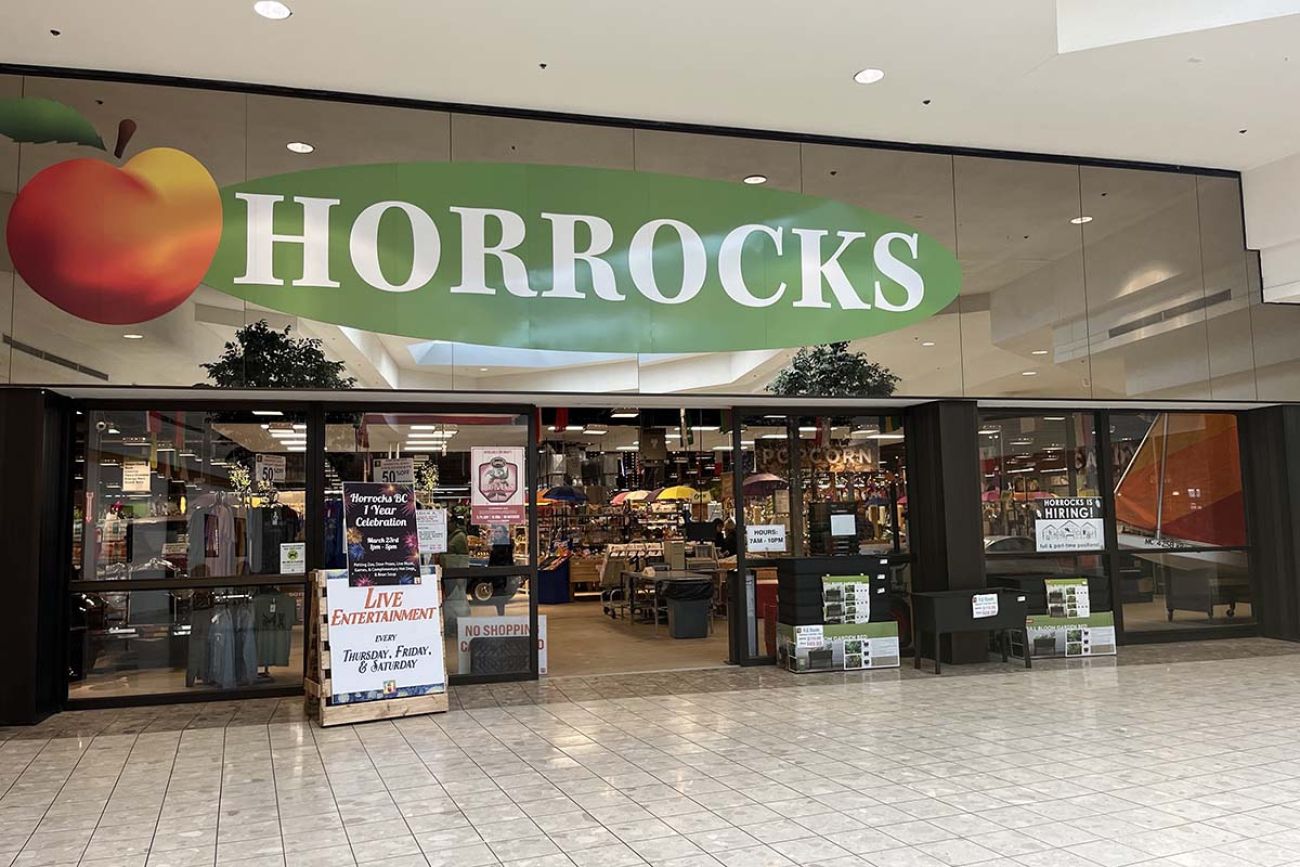
The new store replaces a long-time favored regional destination near downtown. Besides an exterior door and patio area, the store also has an interior mall entrance, making it easier for its customers to reach the rest of the mall. (Bridge photo by Paula Gardner)
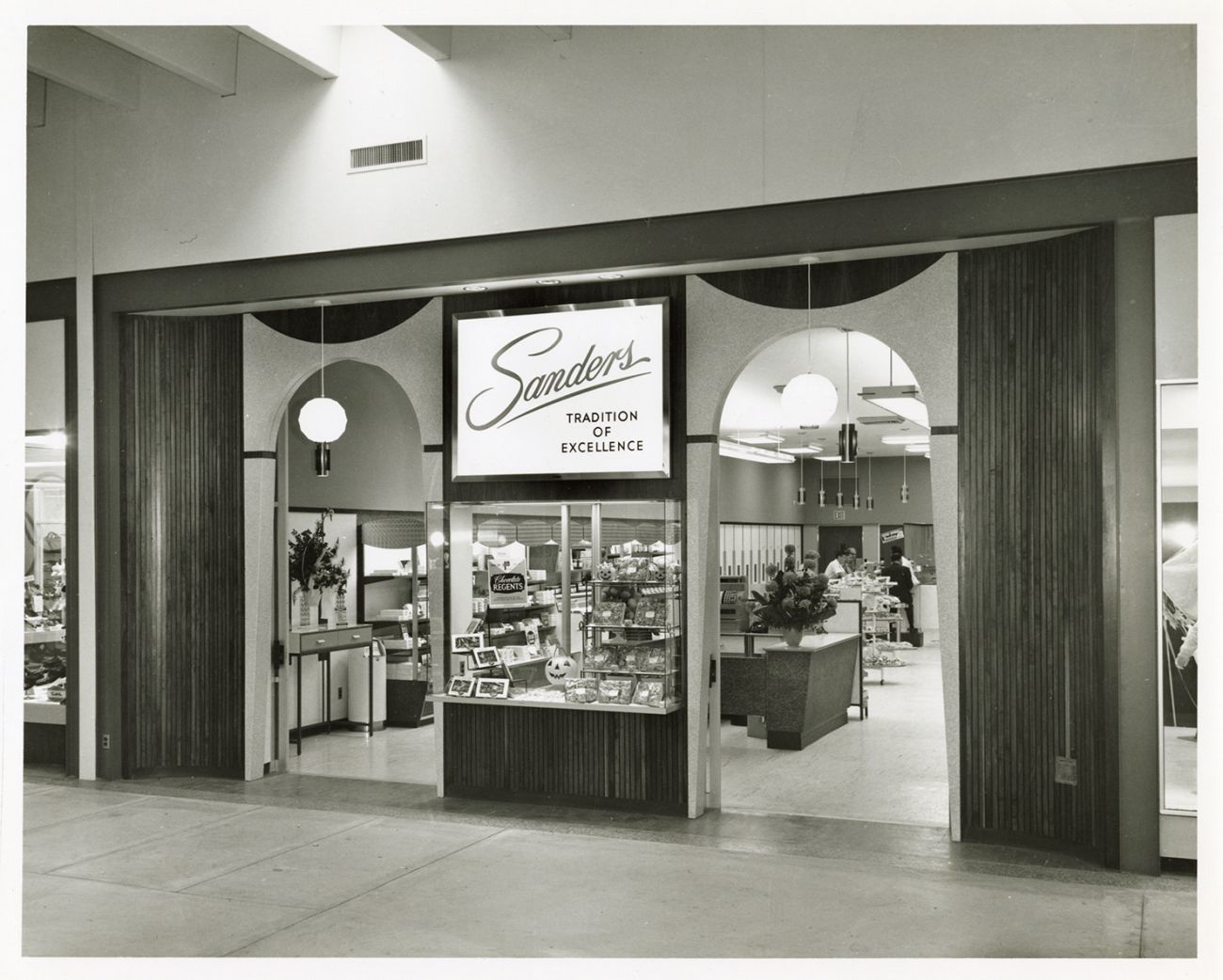
Sanders Candy Co. opened on Woodward at Gratiot in Detroit in the 1870s. Its popularity grew, and after World War II, it expanded across metro Detroit, eventually reaching much of the state and moving into national grocery chains. Part of its growth came from locating in malls, such as this store in an undated photo from an unidentified mall. It’s possible that the image is from either the Livonia Mall or Macomb Mall, based on an original note with the photo. Fun fact: Sanders once made Vernors flavored ice cream, creating a product out of two favored Detroit brands. (Photo courtesy of Detroit Public Library)
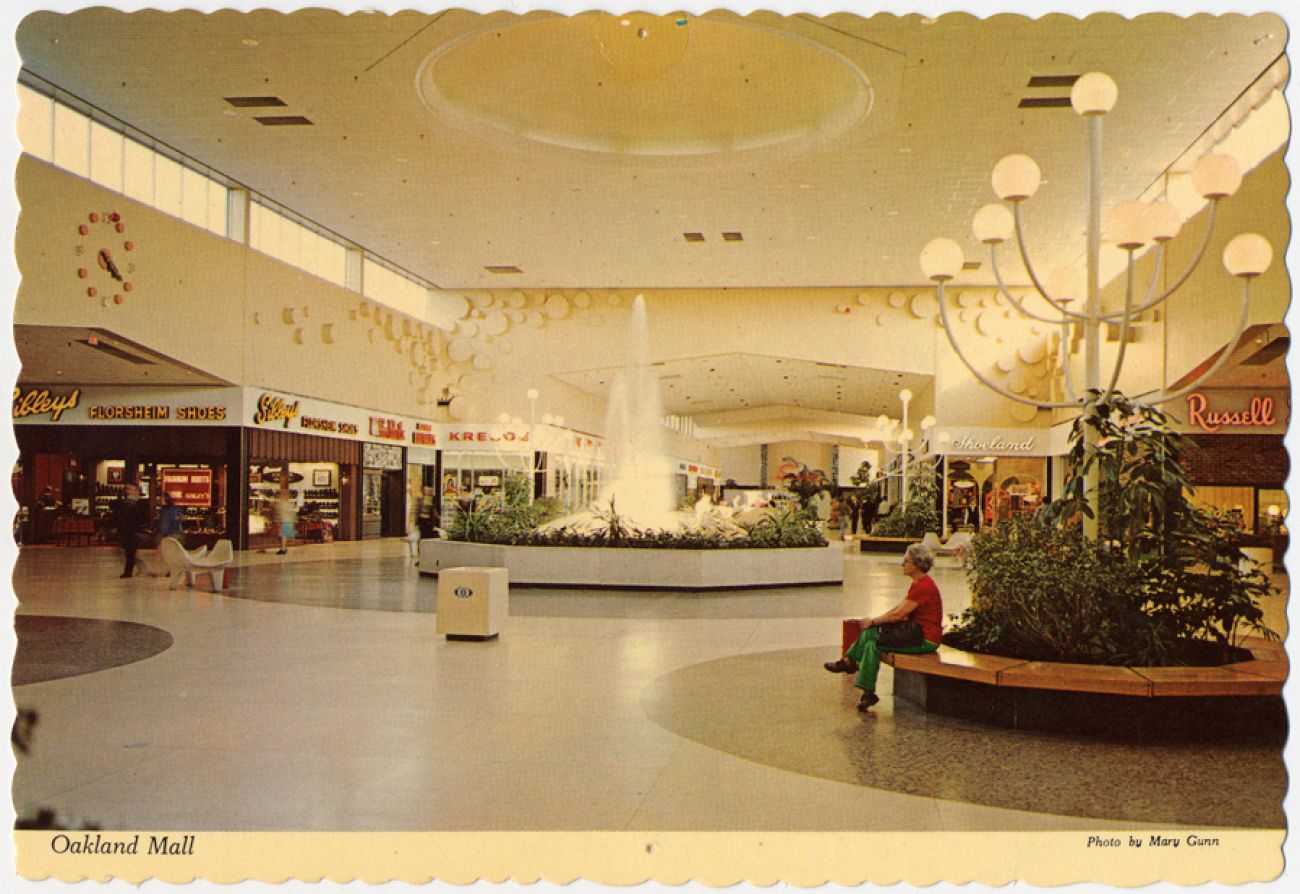
Oakland Mall’s fountain was a centerpiece of the mall. At one time, Oakland Mall boasted of its “constant temperature of 72 degrees, year 'round." (Photo courtesy of Detroit Public Library)
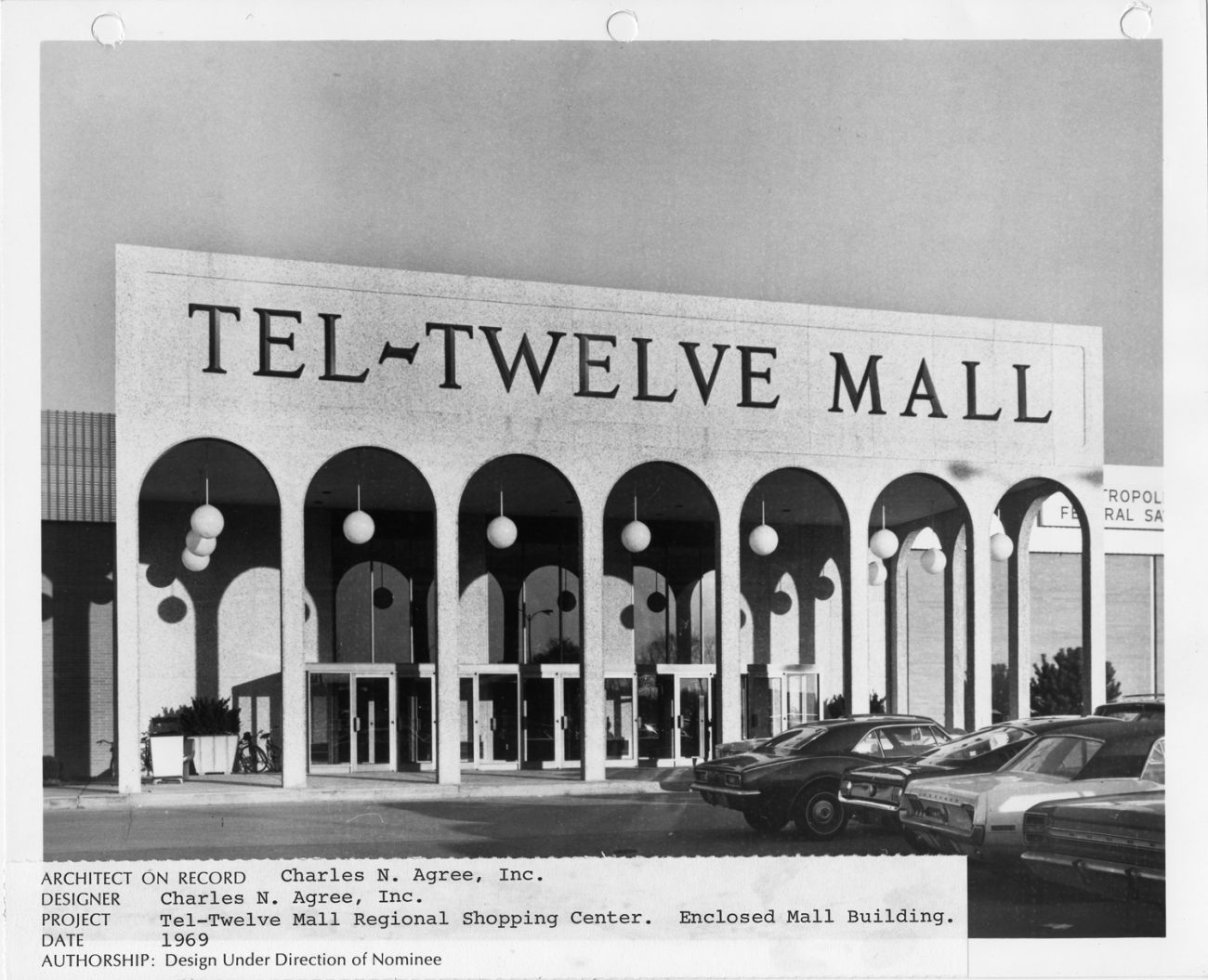
One of the metro Detroit malls that was demolished and rebuilt as an outdoor power center was Tel-Twelve Mall, located on Telegraph Road in Southfield. This photo from 1969 shows the mall, which attracted children during the holidays by offering indoor train rides. (Photo courtesy of Detroit Public Library)
Madonna Look-alike Contest at the Tel-Twelve Mall in Southfield, Michigan, 1985. pic.twitter.com/PLD4gNHkL5
— Scott T. Sterling (@ststerling) August 28, 2019
Tel-Twelve suffered as Northland slid, too, by the 1990s. Shoppers were traveling farther outside of metro Detroit to reach malls like Twelve Oaks, Somerset and Lakeside. Somerset started as an outdoor center in the late 1960s, but it was enclosed amid the addition of upscale retailers. By the 1990s, it was known as the Somerset Collection. But Tel-Twelve still held events to keep people coming in, like this one.
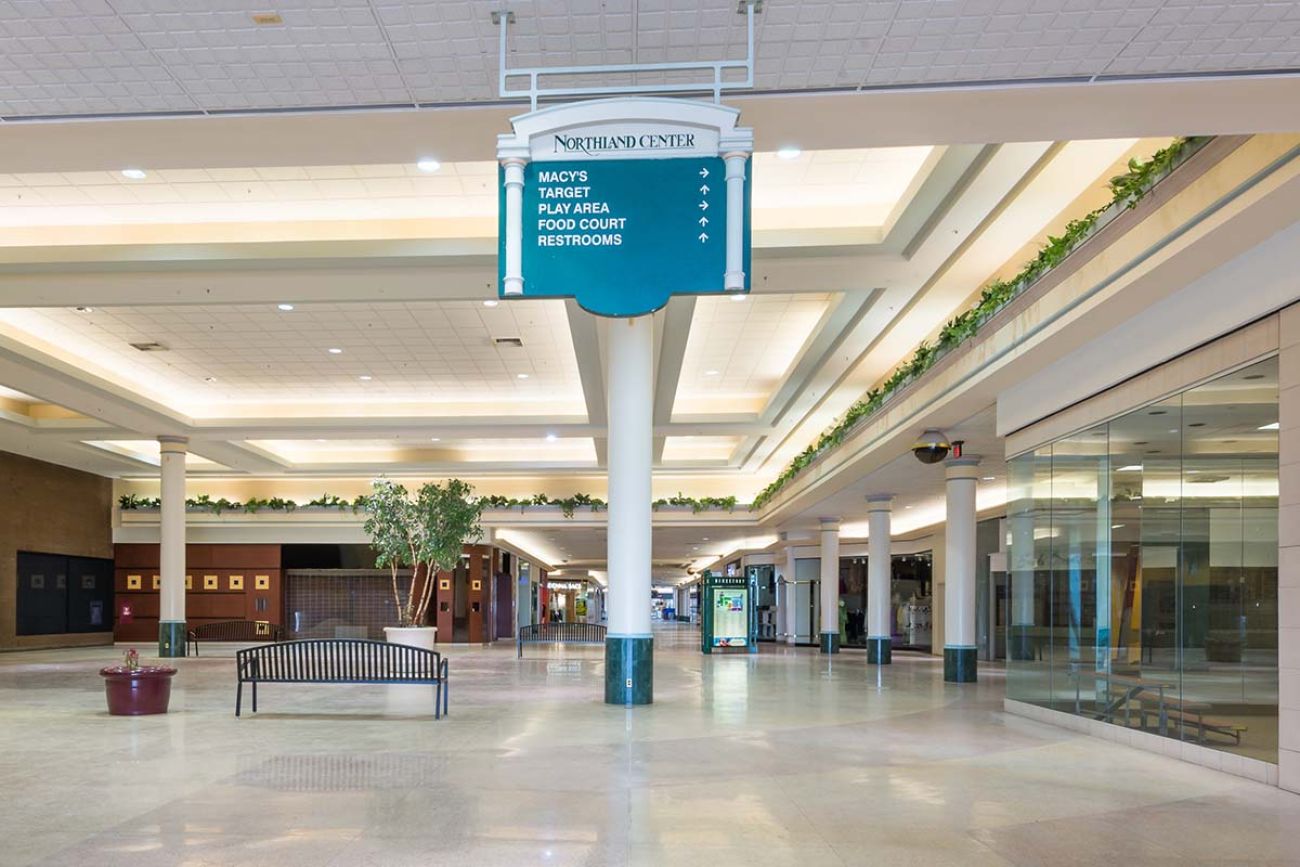
Northland’s demolition in September 2021 moved the 159 acres that once housed the mall closer to reuse. The former J.L. Hudson store was preserved, with hopes that it can be remade into housing or another use that maintains the integrity of the building. The state’s first Costco Business Center recently opened on the property, located between 8 and 9 Mile roads. (Steve Lagreca / Shutterstock.com)
It’s been ten years since the Summit Place Mall, originally Pontiac Mall and the first enclosed mall in #Michigan, closed. Now recently demolished. This Wednesday at 6 pm, we’ll be discussing the evolution of shopping in Oakland. #PreserveHistory #CelebrateHistory @MichiganHist pic.twitter.com/gAmq6vdJhf
— Oakland History Center (@OaklandHistory) September 3, 2019
Another mall that met the wrecking ball was Summit Place in Waterford Township. It started as the Pontiac Mall, but eventually was enclosed. Analysts near the end of its lifespan said it struggled to attract enough shoppers to support itself as larger and more distinct malls gained a foothold. DTE Energy now has a service center on part of the site, which is being marketed.
Hey @LansingMIFacts, did you know there's a new, Black-owned bookstore for Black lit in the Lansing Mall?? pic.twitter.com/WwZtN8DZO2
— liz (@LizEHansen) January 20, 2022
Stores in malls typically paid top dollar to be there, which is why so many national chains filled their hallways: They could afford it. Dips in occupancy over the last decade and the desire to add new attractions to the mall created opportunities for local, independent businesses, such as this one in Lansing Mall. Zap Zone also is opening there this year, and Meridian Mall has a newer autism museum.
Possibly the 1st Michigan outlet mall postcard I've ever seen. One showing Birch Run probably around the late 1980s or 1990s (ebay) pic.twitter.com/wCyPvHgr06
— Michigan's Past (@MichiganHist) October 25, 2022
The proliferation of outdoor shopping centers played a role in the demise of enclosed malls anchored by department stores. Outlet malls also started to take off in the 1980s, and they continued into the last decade as “lifestyle centers.” The outlet complex at Birch Run, next to I-75 and close to Frankenmuth, continues as a thriving destination today.
Star Wars at the Ann Arbor Michigan Briarwood Mall multiplex in June 1977. Is a young John Knoll in there somewhere? pic.twitter.com/1n6gzFFgm7
— Blast Points (@blast_points) July 29, 2022
Mall memories over the years involve more than shopping. Many malls also incorporated movie theaters, which kept the hallways busy during the biggest releases — like the original “Star Wars” in 1977. (John Knoll, mentioned in this tweet, graduated from Ann Arbor’s Huron High School. He now has a visual special effects company, which did its thing for a later “Star Wars” movie.)
This is awesome and impressive. Corum and team for the win!
— HAIL TO THE VICTORS! (@14ersRock) December 10, 2023
Thousands of Michigan fans pack Somerset mall for Blake Corum toy drive https://t.co/hD08TILsqN pic.twitter.com/cKH7EHtPLS
This photo from 2023 shows that some malls can still be culturally relevant and destinations. University of Michigan football star Blake Corum led a holiday toy drive, and the response was huge at Somerset.
Business Watch
Covering the intersection of business and policy, and informing Michigan employers and workers on the long road back from coronavirus.
- About Business Watch
- Subscribe
- Share tips and questions with Bridge Business Editor Paula Gardner
Thanks to our Business Watch sponsors.
Support Bridge's nonprofit civic journalism. Donate today.
See what new members are saying about why they donated to Bridge Michigan:
- “In order for this information to be accurate and unbiased it must be underwritten by its readers, not by special interests.” - Larry S.
- “Not many other media sources report on the topics Bridge does.” - Susan B.
- “Your journalism is outstanding and rare these days.” - Mark S.
If you want to ensure the future of nonpartisan, nonprofit Michigan journalism, please become a member today. You, too, will be asked why you donated and maybe we'll feature your quote next time!




